-
Recent Posts
- Trump’s “Big Beautiful Bill” Is a Grotesque Giveaway to Fossil Fuel Billionaires While Adding $3.3 Trillion to Nation’s Debt
- Senator Chris Murphy Charges that Trump “Has Opened a Channel for Bribery”
- Congressman Casten: Trump’s Assault on the Rule of Law Is Causing Capital Flight Out of U.S. by Foreign Investors
- Trump’s Approval Rating Drops to 80-Year Low; IMF Says U.S. Tariffs Now Exceed the Highs During the Great Depression
- Nasdaq Has Lost More than 3,000 Points Since Trump’s First Full Day in Office in 2025; the Pain Has Barely Begun
- The Bond Crisis Last Week Was a Global No-Confidence Vote in U. S. President Donald Trump
- Trump’s Tariff Plan Guts $5 Trillion in Stock Value in Two Days; Senator Warren Calls for Emergency Action Before Markets Open on Monday
- Trump’s Attacks on Big Law, Universities, and the Media Have a Common Goal: Silence Dissent Against Authoritarian Rule
- Trump Administration Gives All Clear to Laundering Money through Shell Companies and Bribing Foreign Officials
- Four Megabanks on Wall Street Hold $3.2 Trillion in Uninsured Deposits – Which May Explain Senator Schumer’s Pivot to the GOP to Stop a Government Shutdown
- Here’s What Came Crashing Down Yesterday for Trump’s “Genius” Guy, Elon Musk: Tesla Stock, Access to Twitter (X), His Years of Secret Calls with Putin
- After Banning the Associated Press, Trump Is Now Targeting Specific Journalists That He Wants to See Fired
- Closely Watched Atlanta Fed Model Predicts Negative U.S. Growth in First Quarter
- Trump’s Gangster Diplomacy Makes Front Page Headlines Around the Globe
- Who Benefits Alongside Elon Musk If He Succeeds in Killing the CFPB: the Megabanks on Wall Street that Underwrite His Tesla Stock Offerings
- In Trump 1.0, the State Department Used Taxpayer Money to Publish a Book Elevating Elon Musk to a Superhero; It Was Funded by USAID, the Agency Musk Wants to Quickly Shut Down
- News Host Joy Reid Raises Threat of Trump Selling U.S. to Putin; Ten Days Later Her Show Is Cancelled
- Elon Musk’s DOGE Appears to Be Violating a Court Order; It Has Taken Down Hundreds of YouTube Videos that Educate Americans on How to Avoid Being Swindled
- Barron’s Releases Audio of Jamie Dimon Cursing Out His Workers at a Town Hall, as Dimon Plans to Dump Another One Million JPM Shares
- There’s One Federal Investigative Agency that Neither Trump nor Elon Musk Can Touch: It Just Opened an Investigation into DOGE
- Elon Musk’s Companies Were Under Investigation by Five Inspectors General When the Trump Administration Fired Them and Made Musk the Investigator
- Donald Trump Gives the Greenlight to Goldman Sachs and JPMorgan Chase to Return to Bribing Foreign Officials
- After Tech Geeks Built a Back Door to Loot Billions from FTX, Republicans Refuse to Investigate What Elon Musk’s Tech-Squad Did Inside the U.S. Treasury’s Payment System
- Former Prosecutor, Now U.S. Senator, Informs Tesla That CEO Musk May Be Violating Federal Law and to “Preserve All Records”
- Trump’s Hedge Fund Guy Is Now Overseeing the U.S. Treasury, IRS, OCC, U.S. Mint, FinCEN, F-SOC, and the Consumer Financial Protection Bureau
- As Elon Musk Begins Shutting Down Payments to Federal Contractors, a Strange Money Trail Emerges to His Operatives Inside the U.S. Treasury’s Payment System
- JPMorgan Chase Charged by Yet Another Internal Whistleblower with Cooking the Books
- We Asked Google’s AI Search Model, Gemini, Questions About the Fed and Wall Street Megabanks: It Got the Answers Dead Wrong
- With Trump and Melania’s Crypto Coins Likely to Raise Legal Challenges, Why Didn’t Trump Fire the SEC’s Inspector General in His Purge of IGs?
- Fossil Fuel Industry Could End Up Paying Tens of Billions for LA Wildfires and Deceiving the Public on Climate Change for Decades
- It’s Being Called the Biggest Grift by a President in U.S. History: Trump and First Lady Launch their Own Crypto Coins
- Trump Plans to Install a Fracking CEO to Head the Energy Department and Declare a National Emergency on Energy to Gain Vast Powers
- Fossil Fuel Money Played a Role in the Los Angeles Fires and the Push to Install Pete Hegseth as Secretary of Defense
- When It Comes to Wealth Retention in Retirement, Concrete May Be the New Gold
- Wall Street Watchdog Warns “Clock Is Ticking on a Coming Catastrophic Financial Crash”
- Wall Street Is Sending the Same Message to Americans on Fossil Fuel Financing that It Sent on Cigarettes: Drop Dead
- In a Six-Week Span, this Dark Pool with a Curious Past Traded 3.7 Billion Shares
- Wall Street’s Lobby Firm Hired Eugene Scalia of Gibson Dunn to Sue the Fed for Jamie Dimon
- Postmaster General Louis DeJoy Made $561,051 in Compensation in 2024, as Mail Costs Spiked and Delivery Deteriorated
- Fed Chair Jay Powell Sends a Bold Message to Trump and Tanks the Dow by 1123 Points
- The Head of Fixed Income at T. Rowe Price Makes the Scary Case for the 10-Year Treasury to Spike to 6 Percent
- $663 Billion in Cash Assets Have Gone Poof at the Largest U.S. Banks
- Donald Trump to Ring Bell at New York Stock Exchange Today as Hit List Posters Appear in Manhattan Targeting Wall Street CEOs
- Trump Has a Slush Fund to Prop Up the Dollar – Will He Use It to Prop Up Bitcoin Instead?
- A CEO Assassination; a Billionaire Heiress/NYPD Commissioner; a Secret Wall Street Spy Center – Here’s How They’re Connected
- Despite More than 1600 Tech Scientists Signing a Letter Calling Crypto a Sham, Trump Names a Crypto Cheerleader for SEC Chair
- The Fed Rings a Warning Bell: Hedge Funds and Life Insurers Are Reporting Historic Leverage
- Trump’s Nominee for FBI Director, Kash Patel, Has Businesses Financially Intertwined with Trump
- Donald Trump Is at Risk of Getting Named in a Fossil Fuels Conspiracy Lawsuit
- Trump Is Having Difficulty Getting a Lawyer to Accept the Nomination for SEC Chair: Here’s Why
Search Results for: Federal Reserve
Fed’s Balance Sheet Grows by $2.4 Trillion in One Year to a Stunning $6.4 Trillion
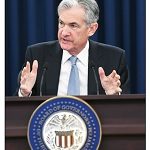
By Pam Martens and Russ Martens: April 16, 2020 ~ The Fed’s H.4.1 release which is faithfully posted on the Fed’s website each Thursday at 4:30 p.m. was seriously delayed today due to “technical difficulties.” When the data was finally posted, it showed that the Federal Reserve’s balance sheet has grown by a stunning $2.4 trillion since April 17 of last year. The Fed’s balance sheet now stands at $6.4 trillion. Following three rounds of Quantitative Easing (QE) after the financial crisis on Wall Street in 2008, the Fed’s balance sheet peaked at $4.5 trillion in 2015. On the day that Lehman Brothers collapsed into bankruptcy on September 15, 2008, the Fed’s balance sheet stood at just $995 billion. The Fed’s balance sheet was supposed to be “normalized” and “wound down” following the last financial crisis. That it has now ballooned to new heights raises the serious question as to … Continue reading
Here Are the Contracts Showing How $4.5 Trillion in Stimulus Was Outsourced to Wall Street
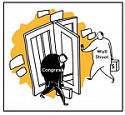
By Pam Martens and Russ Martens: April 16, 2020 ~ Bloomberg News has an article up today with the headline: “The Fed Loves Main Street as much as Wall Street This Time.” The article is accompanied with a graphic of Fed Chair Jerome Powell shooting equal amounts of money at Main Street and Wall Street. Nothing could be further from the truth. Despite the headline, the article by Peter Coy offers not a scintilla of evidence to support the premise that Main Street is getting a fair shake from the Fed. What the article does do is adopt the talking points the Fed has used in every press release it has issued on a new funding facility rollout – that the money will (through some magical and invisible and unexplained hand of the market Gods) make its way to American workers and households. It’s all bunk. Here’s what is actually … Continue reading
A Strange Timeline at JPMorgan Chase Includes a Meeting with Fed Chair Jay Powell

“This begs the question: did the U.S. have a Wall Street banking crisis similar to 2008 long before there was a pandemic crisis?” By Pam Martens and Russ Martens: April 15, 2020 ~ From 3 to 4 p.m. on Wednesday, February 19 of this year, Federal Reserve Chairman Jerome (Jay) Powell met in the anteroom to his office in Washington, D.C. with Jamie Dimon, Chairman and CEO of JPMorgan Chase. Adding to the unusual nature of this meeting, the Chief Financial Officer of JPMorgan Chase, Jennifer Piepszak, had traveled with Dimon from New York to Washington, D.C. to attend this meeting. During the entire month of February, Powell met with no other CEO or CFO of any other Wall Street mega bank. We obtained this information from a review of the Fed Chairman’s daily calendar. The meeting came one day after Reuters reported a “sweeping reshuffle” at JPMorgan’s investment bank … Continue reading
American Workers Get a 4-Month Safety Net; Wall Street Gets a 4 to 5-Year Bailout
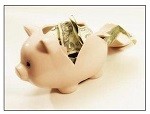
By Pam Martens and Russ Martens: April 13, 2020 ~ The stimulus bill passed by Congress and signed into law by President Trump in March, (the CARES Act), increases the miserly amount most states provide in unemployment benefits (an average of $378 weekly) by an additional $600 per week. But that extra $600 only lasts until July 31 — a period of four months. Millions of small businesses, such as restaurants and retail shops, will shut down permanently as a result of this business disruption, meaning that workers in places like Florida, the third most populous state in the U.S., will be back to their preposterously low weekly unemployment allotment of $275 per week in just four months. Let that sink in for a moment. A worker in Florida, where Republican Governor Ron DeSantis is in charge, is expected to live on $275 a week or $1100 per month, or … Continue reading
The Fed Is Killing the Two Main Functions of Wall Street: Price Discovery and Prudent Capital Allocation
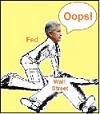
By Pam Martens and Russ Martens: April 11, 2020 ~ On Thursday, knowing that a three-day Easter weekend was coming and the attention of the public would be elsewhere, the Federal Reserve announced that it would allow two of its emergency lending programs to begin buying junk bonds. Those are bonds with less than an investment-grade credit rating, meaning they have a greater likelihood of defaulting. The Fed is not simply accepting junk bonds as collateral for loans, it will actually be buying junk bonds — potentially hundreds of billions of dollars of them. Two of the popular junk bond ETFs, iShares iBoxx High Yield Corporate Bond ETF (symbol HYG) and SPDR Bloomberg Barclays High Yield Bond ETF (symbol JNK) closed the trading day on Thursday up 6.55 and 6.71 percent, respectively, on the announcement. Those ETFs had been plunging in price for most of the month of March. For … Continue reading
Fed Chair Powell Tells Whoppers This Morning on the Brookings Institution Webcast
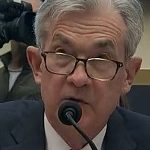
By Pam Martens and Russ Martens: April 9, 2020 ~ The Fed’s advance men were all over the media today attempting to transform a sow’s ear into a silk purse (or, as they say on Wall Street, put lipstick on a pig). The Fed surprised the market today with the stunning announcement that it was going to start buying up junk bonds from the markets after they had been cratering for most of the month of March. That was the pig. The lipstick it applied was worded like this: “The Federal Reserve on Thursday took additional actions to provide up to $2.3 trillion in loans to support the economy. This funding will assist households and employers of all sizes and bolster the ability of state and local governments to deliver critical services during the coronavirus pandemic.” Households and small businesses don’t issue junk bonds. Neither do most state and local … Continue reading
The New York Fed, Owned by Multinational Banks, Is Nationalizing Capital Markets

By Pam Martens and Russ Martens: April 9, 2020 ~ For the first time in the history of the Federal Reserve, it has signed on to a plan with Congress to nationalize the unmanageable debts of global banks and other multinational corporations and put the U.S. taxpayer on the hook for the losses. Conducting the bulk of these programs will be the Federal Reserve Bank of New York, known as the New York Fed, which is a private institution owned by (wait for it) multinational banks. Because the New York Fed is owned by multinational banks and is allowed to create trillions of dollars out of thin air to conduct bailouts of global banks and multinational corporations since it created this precedent in 2008, it is effectively functioning as a multinational central bank with the Federal Reserve in Washington, D.C. and Fed Chairman Jerome Powell little more than titular props … Continue reading
The Fed Apparently Thinks It’s Going to Lose $454 Billion on Its Wall Street Bailout

By Pam Martens and Russ Martens: April 6, 2020 ~ On Thursday, March 26, in the midst of a growing panic on Wall Street over a lack of liquidity for toxic debt, the Federal Reserve Chairman Jerome Powell did something unprecedented. He appeared live on the Today show. His interviewer, Savannah Guthrie, opened the interview by noting that one writer had said that the Fed can simply conjure money out of thin air. (It can.) Guthrie asked Powell if there was any limit to the amount of money the Fed was willing to put into the economy to keep it afloat. Her question should have been: is there any limit to the amount of money the Fed will conjure out of thin air to keep Wall Street afloat? Powell said this: “In certain circumstances like the present, we do have the ability to essentially use our emergency lending authorities and … Continue reading
JPMorgan Chase Has $2.9 Trillion Exposure in Off-Balance Sheet Items Vs $2.3 Trillion on Its Balance Sheet

By Pam Martens and Russ Martens: April 5, 2020 ~ According to the Uniform Bank Performance Report for December 31, 2019 at the Federal Financial Institutions Examination Council (FFIEC), JPMorgan Chase, whose Chairman and CEO, Jamie Dimon, has perpetually bragged about its “fortress balance sheet,” has $2.3 trillion in exposure on its balance sheet and $2.9 trillion in off-balance sheet exposure. The off-balance sheet exposure includes things like credit card lines of credit that have been issued but not tapped as of December 31, 2019; corporate standby letters of credits that have been issued but not yet tapped; securitized assets that have been sold with recourse back to JPMorgan Chase’s balance sheet; real estate loans committed but not yet funded; and a staggering $1.2 trillion in credit derivatives – the same instruments that brought on an FBI probe and congressional investigations of the bank in 2012 and cost the bank … Continue reading
Fed’s Balance Sheet Blasts to $5.8 Trillion; Suggests Fed Is Back to Bailing Out Foreign Banks along with Wall Street
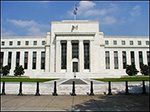
By Pam Martens and Russ Martens: April 2, 2020 ~ At 4:30 p.m. today, the Federal Reserve released the shocking details of what it has been up to in the past week. Its balance sheet has skyrocketed from $5.3 trillion as of March 25 to $5.85 trillion yesterday, a growth of $557 billion in one week’s time. One of the factors affecting this growth was a $142 billion jump in the amount of its Central Bank Liquidity Swaps, where it provides dollars to foreign central banks in exchange for their local currency. During the last financial crisis, some of these dollar swaps were used to bail out global foreign banks that were in trouble. Given the current condition of numerous European banks, and their ties through derivatives to Wall Street’s mega banks, there is every reason to believe these dollar swaps are another thinly disguised bailout of a Frankenbank-financial system … Continue reading

